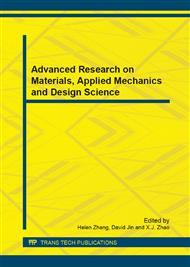p.99
p.103
p.108
p.112
p.117
p.123
p.128
p.132
p.136
Effect of Aging Process on Organization and Performance of Cu-Cr-Zr-Mg Alloys
Abstract:
The organization and performance of Cu-0.4Cr-0.2Zr-0.15Mg alloy after solution treatment at 960°C for 2h, and then cold-rolled to deformations of 80%, finally aging treatment from 400°C to 500°C in argon atmosphere for various periods from 4h to 16h prior to air cooling were analyzed. Eventually the optimum process was aging at 475°C for 16h. At this process condition, the alloy had an excellent comprehensive mechanical properties and conductivity property of the tensile strength, elongation, and electrical conductivity reaching 549MPa,15% ,and 82.34%IACS respectively. The microstructure of alloy with the best aging process was analyzed by SEM and EDS and TEM shows that the separation phase distributed diffusely on matrix. the main separation phase is Cr phase which mainly exists as simple substance form after age treatment ,the fraction Cr phase forms intermetallic compound with Cu,Zr,Mg. The other phase (as Zr,Mg) exists as intermetallic compound form. The Zr phase doesnt exist as simple substance form.
Info:
Periodical:
Pages:
117-122
Citation:
Online since:
June 2013
Authors:
Keywords:
Price:
Сopyright:
© 2013 Trans Tech Publications Ltd. All Rights Reserved
Share:
Citation:


